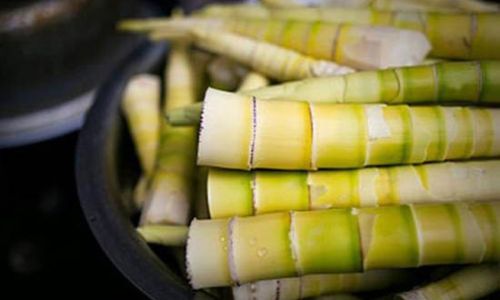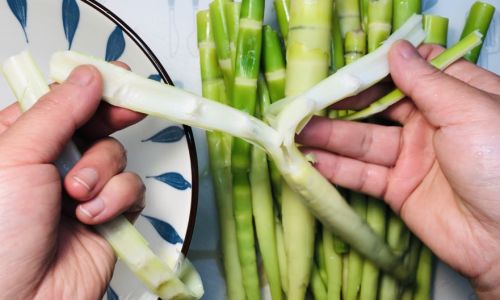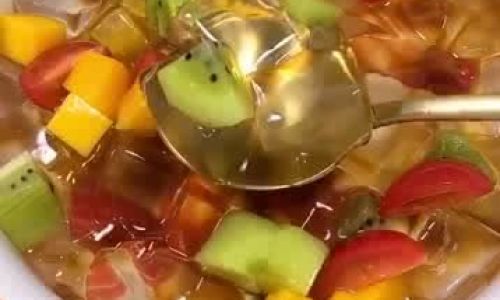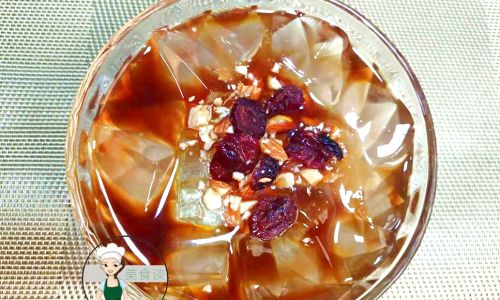Introduction
Spring bamboo shoots, or spring shoots, are a culinary delight cherished across Asia and beyond for their crisp texture and unique flavor. However, their natural bitterness often poses a challenge for home cooks and professional chefs alike. This bitterness, caused by compounds like cyanogenic glycosides, can overwhelm dishes if not properly addressed. Fortunately, centuries of culinary tradition and modern food science have yielded effective methods to neutralize this harshness, transforming raw shoots into versatile, delicious ingredients. This guide explores the science behind bitterness in bamboo shoots and details actionable techniques to eliminate it, ensuring your recipes shine with balanced, nuanced flavors.
Understanding the Bitterness in Spring Bamboo Shoots
Before diving into solutions, it’s essential to grasp why bamboo shoots taste bitter. Freshly harvested shoots contain compounds like taxiphyllin, a cyanogenic glycoside that releases hydrogen cyanide (HCN) when damaged or exposed to enzymes. While small amounts of HCN are harmless, they contribute to the sharp, astringent taste that defines raw shoots. Additionally, tannins and phenolic acids further amplify bitterness, especially in older or improperly stored specimens.

The severity of bitterness varies by species, age, and harvest time. Young, tender shoots typically have milder flavors, while mature ones require more aggressive treatment. Environmental factors, such as soil composition and rainfall, also influence chemical levels. Understanding these variables helps cooks tailor their approach to each batch of shoots.
Preliminary Steps: Selecting and Preparing Shoots
The journey to de-bitter bamboo shoots begins at the market or garden. Opt for small, firm shoots with tight, moist scales. Avoid those with wrinkled skin or a pungent odor, as these indicate age or spoilage. Once home, trim the base and peel the outer layers until the pale, tender core is exposed. This preliminary step removes the most concentrated sources of bitterness.
For homegrown shoots, consider “shocking” them by boiling immediately after harvest to halt enzymatic activity. If storing, wrap unpeeled shoots in damp cloths and refrigerate for up to three days—delaying peeling preserves freshness.
Boiling: The Classic Method
Boiling is the most traditional and reliable way to eliminate bitterness. Here’s how to execute it flawlessly:
- Peel and Slice: Remove outer layers and cut shoots into desired shapes (slices, strips, or halves).
- Initial Blanch: Place shoots in a pot of cold water, bring to a rolling boil, and cook for 5–7 minutes. Drain and discard the water—this removes surface impurities.
- Second Boil with Additives: Refill the pot with fresh water, adding 1–2 teaspoons of salt per liter and a pinch of baking soda. Simmer for 15–20 minutes. Salt enhances flavor, while baking soda raises pH, accelerating glycoside breakdown.
- Test for Bitterness: After cooling, taste a piece. If bitterness persists, repeat the boil with fresh water and additives.
Pro Tip: Overcooking can make shoots mushy. Monitor texture by piercing with a fork—they should yield slightly but retain crispness.
Blanching: A Quick Fix for Mild Bitterness
For shoots with subtle bitterness, blanching offers a faster alternative:
- Method: Submerge peeled shoots in boiling salted water for 3–5 minutes, then transfer to an ice bath to halt cooking. This process softens fibers and leaches out glycosides without sacrificing texture.
Soaking and Marinating: Gentle Flavor Infusion
Soaking leverages osmosis to draw out bitterness gradually:
- Cold Water Soak: Submerge sliced shoots in cold water, changing it every 2–3 hours for 12–24 hours. This method is ideal for delicate preparations like salads.
- Acidulated Soak: Add 1 tablespoon of vinegar or lemon juice per liter of water. Acidity accelerates glycoside hydrolysis, reducing soaking time to 4–6 hours.
- Rice Water Soak: Use the cloudy water from rinsed rice. Starches in rice water bind to bitter compounds, enhancing removal.
For marinating, combine soaked shoots with aromatics like ginger, garlic, or chili in a soy-based marinade. The salt and acids further suppress bitterness while imparting depth.
Fermentation: A Probiotic Approach
Fermentation transforms bitterness into umami-rich complexity through lacto-fermentation:
- Prepare Brine: Dissolve 2% salt by weight in water (e.g., 20g salt per 1L water).
- Pack Jars: Layer shoots with spices (peppercorns, bay leaves) in a sterilized jar, covering with brine.
- Ferment: Keep at 18–22°C (64–72°F) for 7–14 days. Burp jars daily to release gas.
The lactic acid bacteria consume glycosides, producing tangy flavors and probiotics. Fermented shoots pair beautifully with pickled vegetables or fried rice.
Combination Methods for Enhanced Results
For stubbornly bitter shoots, combine techniques:

- Boil-and-Soak: Boil shoots, then soak overnight in refrigerated water.
- Blanch-and-Marinate: Blanch shoots, then marinate in a mixture of rice vinegar, sugar, and sesame oil.
Cooking Techniques to Complement De-bittered Shoots
Once de-bittered, bamboo shoots become a canvas for culinary creativity:
- Stir-Fries: Sauté with garlic, soy sauce, and oyster sauce for a classic Chinese dish.
- Soups: Add to miso or chicken broth during the final 5 minutes of cooking.
- Grills: Marinate in teriyaki sauce and char for smoky contrast.
- Salads: Toss with herbs, citrus, and a light vinaigrette.
Common Mistakes to Avoid
- Skipping Peeling: The outer layers concentrate bitterness—always remove them.
- Using Old Shoots: Mature shoots require longer treatment; discard if fibers are tough.
- Over-Salting: Excess salt masks natural flavors; taste frequently during boiling.
- Rushing Fermentation: Prematurely halting lacto-fermentation leaves residual bitterness.
Storage Tips for Maintaining Freshness
- Refrigeration: Store peeled, de-bittered shoots in airtight containers with water for up to 5 days.
- Freezing: Blanch shoots, cool, and freeze in zip-top bags for 6 months.
- Pickling: Preserve in vinegar brine for year-round availability.
Frequently Asked Questions
Q1: How long should I boil bamboo shoots to remove bitterness?
A1: Boil for 15–20 minutes with salt and baking soda, testing periodically.
Q2: Can I eat bamboo shoots raw after de-bittering?
A2: While boiling renders them safe, raw consumption is uncommon due to residual firmness.
Q3: Does boiling remove all nutrients?
A3: Some vitamins leach into water; retain cooking liquid for soups to minimize loss.
Q4: Can I reuse boiling water for multiple batches?
A4: No—discard water after each boil to avoid reintroducing bitterness.
Q5: Are there non-cooking methods to reduce bitterness?
A5: Yes—soaking in saltwater or rice wine vinegar for 4–6 hours works for mild cases.
Conclusion
Eliminating bitterness from spring bamboo shoots is both a science and an art. By understanding the chemical drivers of harshness and mastering techniques like boiling, blanching, and fermentation, cooks can unlock the shoots’ full potential. Whether you’re crafting a delicate salad or a hearty stew, these methods ensure your dishes balance crisp texture and mild, earthy sweetness. Experiment with combinations, trust your palate, and savor the transformation from bitter to brilliant—a testament to the alchemy of cooking.




0 comments